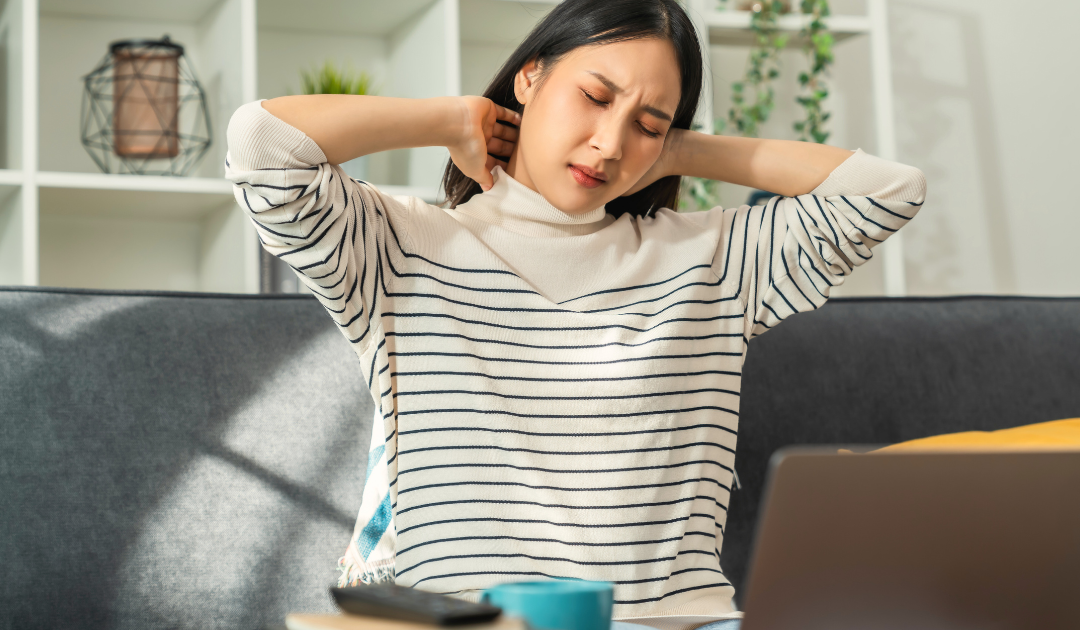Neck pain is something that many of us can relate to, affecting millions of people around the globe. Whether it comes from slouching at your desk, spending too much time on a computer, dealing with stress, or a mix of other factors, neck pain can really get in the way of enjoying life. While traditional methods of relief often involve medications or physical therapy, many folks are discovering the wonderful benefits of holistic approaches like yoga to help ease their discomfort.
Yoga is a beautiful practice that blends physical movement, mindful breathing, and meditation, making it especially effective for tackling neck pain. If you’re looking for ways to relieve that nagging tension, improve your flexibility, and promote better posture, you’re in the right place! Let’s explore some yoga poses that can make a positive difference in how you feel.
Understanding Neck Pain
Before diving into the specific yoga poses, it is essential to understand the common causes of neck pain. This knowledge will help you appreciate how the proposed poses can effectively target those issues:
Poor Posture:
Slouching, especially while sitting at a desk or using a smartphone, can put a strain on the neck.
Muscle Strain:
Overuse of neck muscles during physical activities or sleeping in an awkward position can lead to strain.
Stress and Tension:
Emotional stress often manifests in physical tension in the neck and shoulders.
Injuries:
Accidents or falls can result in more severe neck pain due to injuries like whiplash.
By focusing on alignment, flexibility, and relaxation, yoga can help counteract these common causes of neck pain.
Eagle Arms (Garudasana Arms)
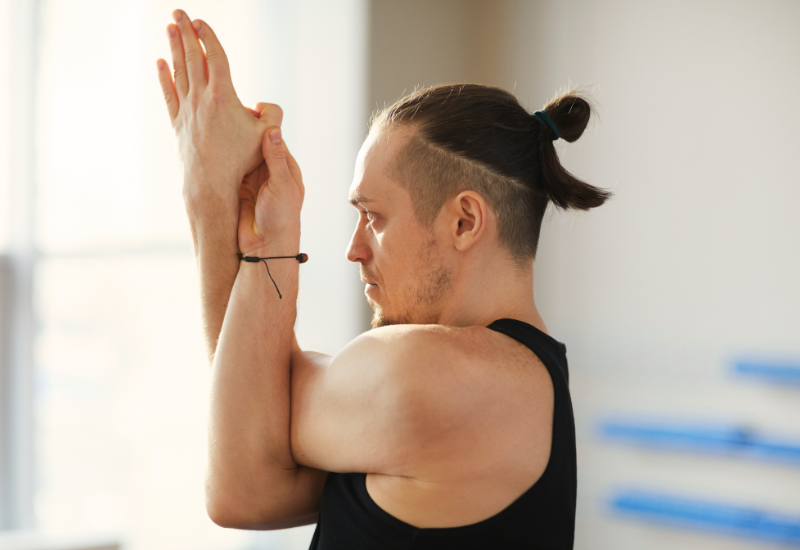
Instructions:
- Sit comfortably in a chair or on the ground.
- Extend your arms forward, then cross your right arm over your left at the elbow.
- Bend your elbows and wrap your forearms around each other, bringing your palms together if possible.
- Hold for several breaths, feeling the stretch in your shoulders and upper back. Switch sides.
Benefits:
- Stretches the shoulders and upper back.
- Relieves tension accumulated from poor posture.
- Enhances concentration and focus.
Variations with Props:
- Use a strap around your hands if you cannot grasp them together.
- Perform the pose seated on a chair or bolster if standing is uncomfortable.
Bhujangasana ( Cobra Pose)
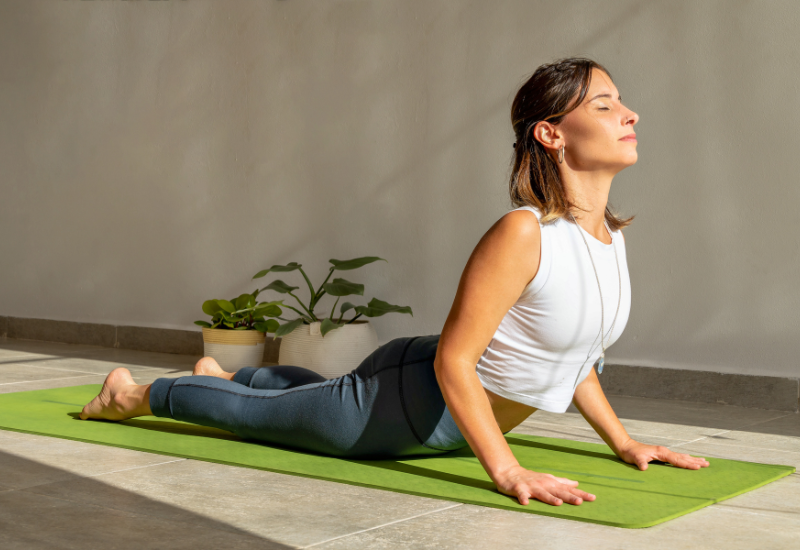
Instructions :
- Lie face down on your mat with your legs extended behind you and your palms under your shoulders.
- Inhale as you gently press into your palms, lifting your chest off the ground while keeping your hips and legs grounded. Keep your elbows bend and not extended.
- Keep your neck in a neutral position, avoiding any extreme bending.
- Hold for 15-30 seconds while breathing deeply.
Benefits:
- Strengthens the spine and opens the chest.
- Improves posture and relieves tension in the neck and shoulders.
- Encourages deep lung capacity.
Variations with Props:
- Place a folded blanket under your pelvis for additional support and comfort.
- Use your elbows on the ground for a gentler version (Sphinx Pose), reducing the amount of extension in the back.
Thread the Needle Pose
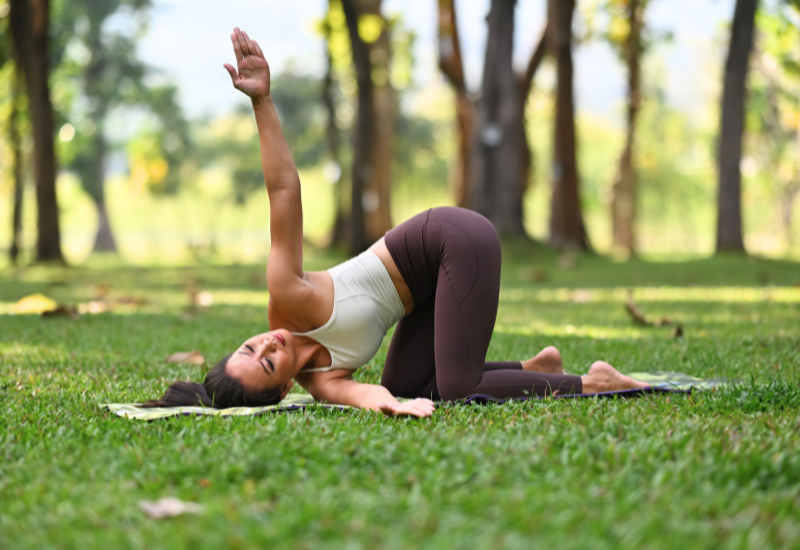
Instructions:
- Start in a tabletop position.
- Slide your right arm under your left arm, resting your right shoulder and ear on the mat.
- Keep your left arm extended or bend it and place it behind your back.
- Hold for several deep breaths, then switch sides.
Benefits:
- Stretches the shoulders and upper back.
- Relieves tension in the neck.
- Improves spinal mobility.
Variations with Props :
- Use a block or bolster under your resting arm for additional support.
- Place a cushion under your head for comfort if your head doesn’t comfortably reach the mat.
Standing Forward Fold (Uttanasana)

Instructions:
- Stand with your feet hip-width apart.
- Inhale to lengthen your spine, then exhale as you hinge at your hips, folding forward.
- Let your head and neck hang heavy, and bend your knees slightly if needed.
- Hold for a few breaths.
Benefits:
- Stretches the hamstrings, calves, and lower back.
- Can relieve stress and calm the mind.
- Promotes relaxation in the neck and shoulders.
Variations with Props:
- Use a block under your hands for support, lifting your torso and reducing strain.
- Bend your knees slightly to prevent tension in the lower back and hamstrings.
Seated Forward Fold (Paschimottanasana)
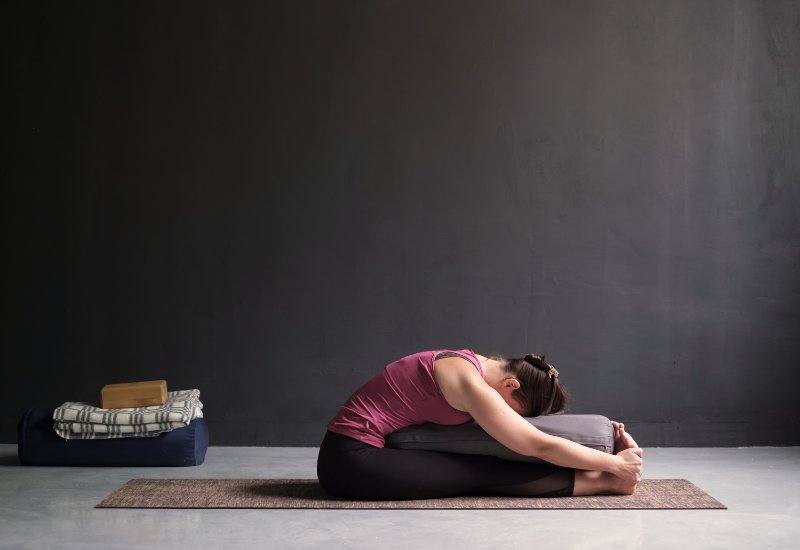
Instructions:
- Sit on the floor with your legs extended in front of you.
- Inhale, reaching your arms overhead to lengthen your spine.
- Exhale as you hinge at the hips and reach forward toward your feet.
- Allow your neck to relax, keeping a soft bend in your knees if necessary.
- Hold for several breaths.
Benefits:
- Stretches the entire back body, including the neck.
- Calms the nervous system and reduces anxiety.
- Improves hamstring flexibility.
Variations with Props:
- Use a strap around your feet to aid in stretching without straining.
- Sit on a folded blanket to elevate your hips, allowing for a more comfortable forward fold.
- Place a bolster on your lap and rest your head on it.
Side Neck Stretch

Instructions:
- Sit or stand with an upright posture.
- Slowly tilt your head to the right, bringing your right ear toward your right shoulder.
- To deepen the stretch, you can gently press down on your left shoulder with your left hand.
- Hold for 15-30 seconds, feeling the stretch along the left side of your neck.
- Switch sides.
Benefits:
- Stretches the muscles on the sides of the neck.
- Relieves tension and creates space in the cervical spine.
Variations with Props:
- Use a yoga block under your sitting surface for added support.
- Place a towel or strap around the shoulder for gentle assistance in keeping it down.
Contraindications:
- Avoid if you have severe neck injuries or conditions.
- Consult a healthcare professional if you feel any pain beyond mild discomfort.
Child’s Pose (Balasana)
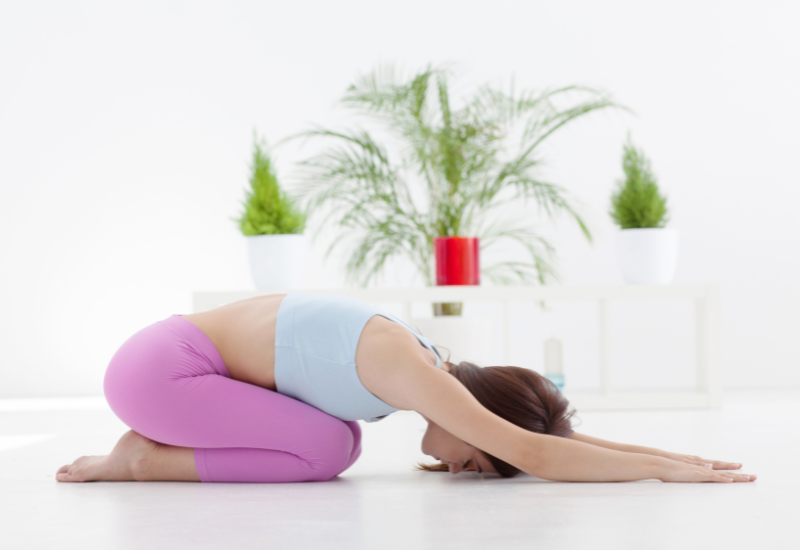
Instructions:
- Begin on your hands and knees.
- Sit back on your heels and stretch your arms out in front of you, resting your forehead on the mat.
- Relax your shoulders and breathe deeply, allowing gravity to gently stretch your neck and back.
Benefits:
- Calms the mind and relieves stress.
- Gently stretches the back and neck.
- Promotes relaxation of the shoulder muscles.
Variations with Props:
- Place a bolster or cushion between your thighs and calves for extra support.
- Use a block under your forehead for comfort if your forehead does not reach the floor.
Bridge Pose (Setubandhasana)

Instructions:
- Lie on your back with knees bent and feet flat on the ground, hip-width apart.
- Press through your feet as you lift your hips towards the ceiling while keeping your shoulders and head on the floor.
- Interlace your fingers under your back and hold for 30 seconds, breathing deeply.
Benefits:
- Strengthens the back, hamstrings, and glutes.
- Opens the chest and shoulders, relieving tension.
- Improves circulation and digestion.
Variations with Props:
- Place a block under your sacrum for supported bridge pose, allowing for relaxation in the back.
- Use a rolled-up towel under your neck for additional support.
Cat and Cow Pose (Marjariasana)

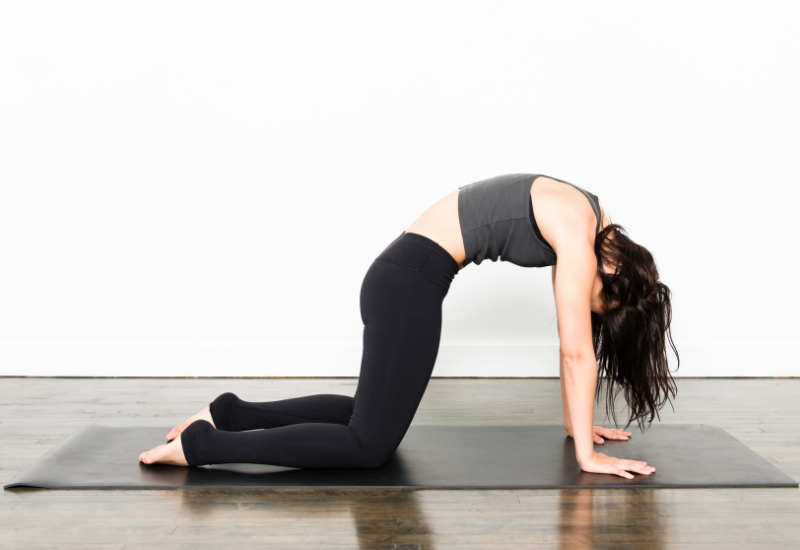
Instructions:
- Start on all fours in a tabletop position, with your wrists under your shoulders and your knees under your hips.
- Inhale as you arch your back, allowing your belly to sink towards the floor and lifting your head and tailbone upwards (Cow Pose).
- Exhale as you round your spine, tucking your chin to your chest and drawing your belly button toward your spine (Cat Pose).
- Continue alternating between these two positions for 5-10 breaths.
Benefits:
- Increases flexibility of the spine.
- Relieves tension in the neck and shoulders.
- Encourages rhythmic breathing, promoting relaxation.
Variations with Props:
- Use a folded blanket under your knees for additional comfort.
- Use a yoga block to support your hands if you have wrist discomfort.
Shavasana
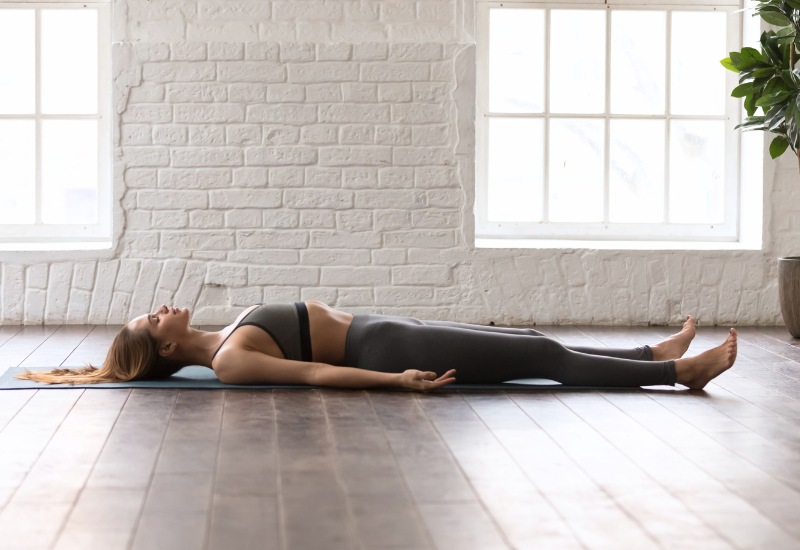
Instructions:
- Lie on your back with your legs extended and arms by your sides, palms facing up.
- Close your eyes and focus on your breath, allowing your body to relax completely.
- Hold for at least 5-10 minutes.
Benefits:
- Induces deep relaxation and reduces stress.
- Calms the mind and promotes overall well-being.
- Encourages mindfulness and breathing awareness.
Variations with Props:
- Place a bolster or cushion under your knees to relieve lower back tension.
- Use an eye pillow or soft cloth over your eyes to block out light and enhance relaxation.
Takeaway
Practicing yoga poses can significantly alleviate neck pain while promoting overall well-being. Understanding the benefits, contraindications, and variations with props can ensure a safe and effective practice tailored to your individual needs. Always listen to your body as you explore each pose and make adjustments as necessary.
Integrating the use of props can enhance your practice by providing support and comfort, ultimately allowing for deeper stretches and more relaxation. Yoga is a personal journey, and with patience and consistency, you can make significant strides in relieving neck tension and improving your quality of life. If ever in doubt, consulting with a knowledgeable yoga instructor or health professional can provide further personalized guidance.

